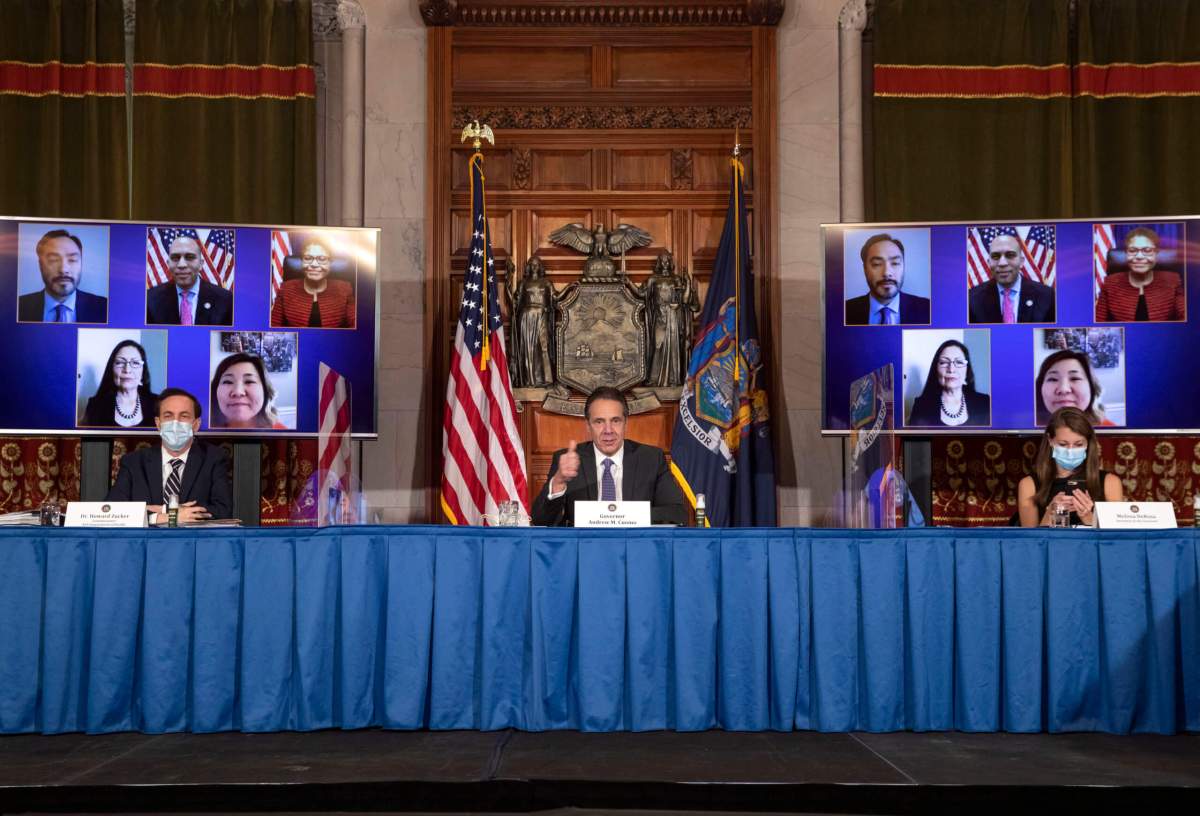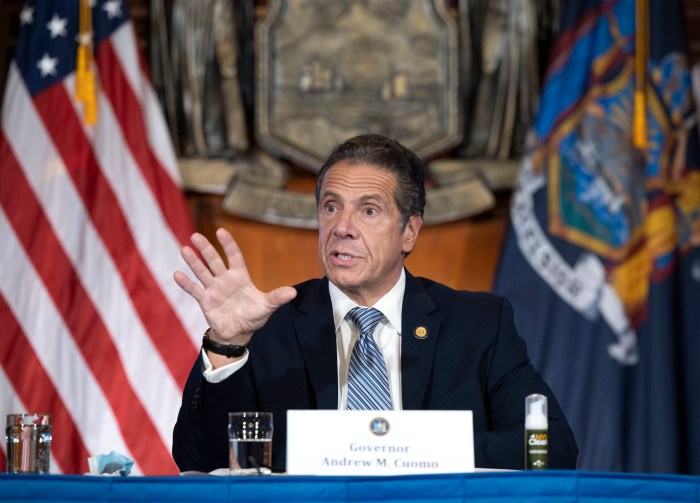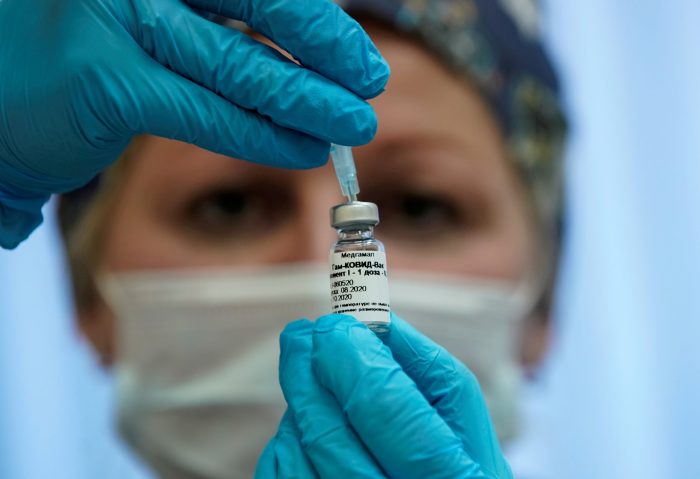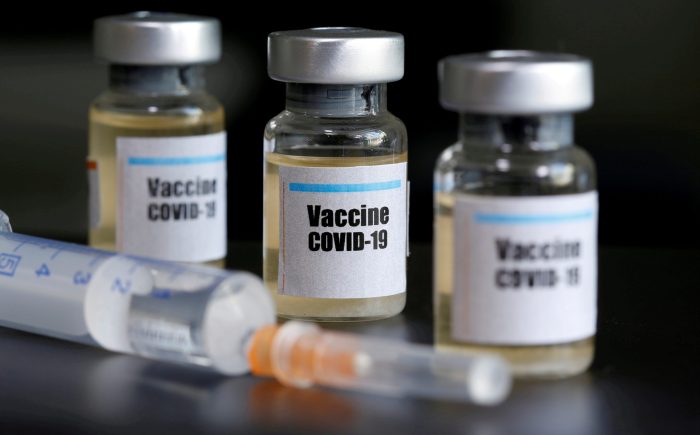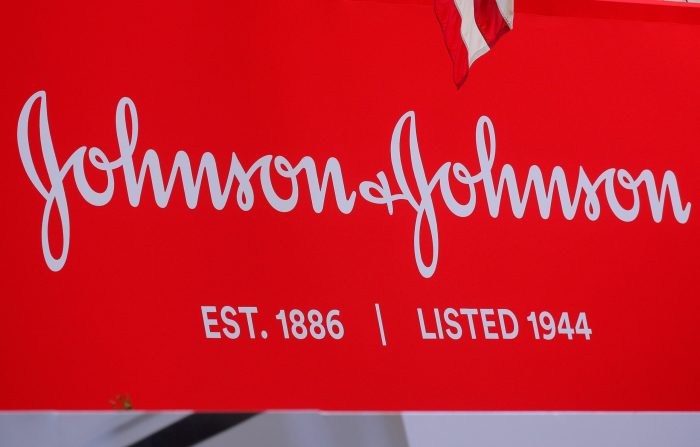Winter is coming — and so is the COVID-19 vaccine.
In fact, Governor Andrew Cuomo said Friday, the vaccine will be here imminently, as 170,000 doses of Pfizer’s COVID-19 inoculation should be in New York on or about Sunday or Monday. Later this month, on or about the week of Dec. 21, New York will receive 346,000 doses of Moderna’s version of the shot.
But even if the COVID-19 vaccine is “the weapon that ends the war,” Cuomo cautioned that New York’s battle against the deadly virus is far from over. Along with ordering a suspension of indoor dining in New York City, Cuomo announced that the state would be finalizing this weekend a “winter plan” aimed at curbing the spread of COVID-19 amid a rising tide of cases and, more importantly, hospitalizations.
As he has repeatedly said, the holidays are proving to be the most challenging hurdle as the state looks to stop the spread. The most recent data indicates that 74% of the new COVID-19 cases come from household gatherings. That number may only continue to increase during the celebrations of Christmas, Hanukkah, Kwanzaa and New Year’s; Cuomo believes the upward COVID-19 trend may only begin to flatten in about mid-January.
Hospitalizations, meanwhile, continue to rise across the state; as of Dec. 10, more than 1,000 people statewide were in intensive care wards with COVID-19. Beds are filling up, and Cuomo had ordered hospitals to take additional measures to increase capacity — such as increasing staffed beds by 25% and/or cancelling elective surgeries.
It’s unlikely that the full state will go into shutdown again, as it did in March and April, but regions and localities may wind up going into lockdowns if hospital capacity starts to exceed 90%, Cuomo warned Friday.
The winter plan would institute a new definition of a “red zone,” which would be declared if the region is 21 days out from 90% capacity.
“If we se that we’re on a gliding path toward overwhelming the hospitals, then you have no choice but to close down the economy,” Cuomo said. “You cannot overwhelm the hospital system.”
The new “orange zone” would be for any area that experiences 4% positivity over a 10-day period; hospital capacity of 85% or higher; and/or a rate of hospitalization that the state Health Department deems to be too high.
“Yellow zones” would be for any part of New York with a 3% positivity rate where COVID-19 growth and hospitalizations are increasing dramatically.
The governor said new zones would be declared Monday after state officials take the weekend to assess the situation. If your community finds itself in an orange or yellow zone, Cuomo advised residents to take it seriously.
“In your community, you have a problem. It’s not somewhere else, it’s your community… and you can make a difference,” Cuomo said. “God will take people. We’re not going to stop death, but we should make sure we’re doing everything we can to protect every life that we can.”
As for the vaccine, Cuomo reiterated Friday his belief that the Trump administration’s distribution plan doesn’t provide nearly enough funding for states for it to be effective — and that it discriminates against communities of color that lack pharmacies and health care facilities.
Cuomo’s call Friday featured five Congressional leaders who vowed to support efforts to increase funding for the program and ensure that it is effective and equitable in vaccine distribution: Brooklyn Congressman Hakeem Jeffries, chair of the House Democratic Caucus; Queens Congresswoman Grace Meng, first vice-chair of the Asian Pacific American Caucus; California Congresswoman Karen Bass, chair of the Congressional Black Caucus; Texas Congressman Joaquin Castro, chair of the Congressional Hispanic Caucus; and New Mexico Congresswoman Deb Haaland, one of only two Native American women in Congress today.
“We have to continue to press the case together to make sure that, as the vaccines become available, that they are disseminated in equitable, efficient and effective fashion to everyone,” Jeffries said. “But let the dissemination be driven by the data and the need, and that’s going to be in communities of color.”
“There must be adequate fed funding to ensure distribution. States cannot do this alone,” Meng added. “The federal government must be there to support the states.”



